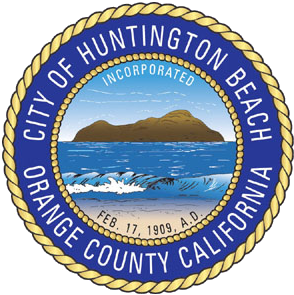UCI and SoCalGas Partner to Design "Advanced Energy Community"
Oak View neighborhood in Huntington Beach to benefit from model energy plan
 Dec. 12, 2017 - Southern California Gas Co. (SoCalGas) today announced that it will partner with the University of California-Irvine's Advanced Power & Energy Program to design an "Advanced Energy Community" in an underserved neighborhood in Huntington Beach. The community will be planned as a replicable model that optimizes a full spectrum of diverse energy options, including solar, wind, and renewable natural gas. It will also consider the capability of storing wind- and solar-generated energy with power-to-gas technology.
Dec. 12, 2017 - Southern California Gas Co. (SoCalGas) today announced that it will partner with the University of California-Irvine's Advanced Power & Energy Program to design an "Advanced Energy Community" in an underserved neighborhood in Huntington Beach. The community will be planned as a replicable model that optimizes a full spectrum of diverse energy options, including solar, wind, and renewable natural gas. It will also consider the capability of storing wind- and solar-generated energy with power-to-gas technology.
"We're excited to co-fund this worthy project in collaboration with the California Energy Commission," said Lisa Alexander, vice president of customer solutions and communications at SoCalGas. "Creating an Advanced Energy Community will serve as a guide for future policy and planning in California to keep our energy system sustainable and make a difference in our clean-energy future."
"The integrated set of energy efficiency measures, smart grid technologies, renewable power generation and energy storage technologies that we will include in the Advanced Energy Community design will improve quality of life while reducing costs and emissions," said Jack Brouwer, associate director of the Advanced Power and Energy Program of UCI. "We are pleased to work with SoCalGas in this exciting project that could make a big difference in the lives of those living in this community."
Power-to-gas technology converts surplus energy from solar panels or wind farms into hydrogen, which can be blended with natural gas and utilized in everything from home appliances to power plants. The renewable hydrogen can also be used in hydrogen fuel cell vehicles or converted to methane for use in a natural gas pipeline and storage system. The conversion of renewable electricity to gas enables long-term, monthly, or seasonal storage of large amounts of carbon-free power. Researchers note that this long-duration storage is difficult to achieve with traditional storage technology such as lithium-ion batteries, which are typically designed to store energy for shorter time periods.
The University of California-Irvine began a pilot project in 2016 funded by SoCalGas, which successfully demonstrated the use of power-to-gas technology to use excess solar-generated electricity on the university's campus.
Last month, SoCalGas announced the successful installation of a novel bioreactor system that will be used to test power-to-gas technology at the U.S. Department of Energy's National Renewable Energy Laboratory (NREL) in Golden, Colorado. The first of its kind pilot project will be used to help assess the commercial viability of this power-to-gas approach to energy storage and provide insights into potential megawatt-scale system designs.
According to a 2017 Lawrence Berkley National Lab study, by 2025, between 3,300 and 7,800 gigawatt-hours of excess solar and wind energy will be curtailed in California. If all that excess solar and wind energy were converted to methane through the biomethanation process and stored as renewable natural gas, it would provide enough renewable energy to heat 158,000 to 370,000 homes or provide renewable electricity to 80,000 to 187,000 homes.
SoCalGas is providing $150,000 in co-funding for the Huntington Beach project, which was proposed in response to a California Energy Commission Electric Program Investment Charge (EPIC) solicitation. The EPIC program funds clean energy research, demonstration and deployment projects that support California's energy policy goals and promote greater electricity reliability, lower costs, and increased safety.
– SoCalGas
